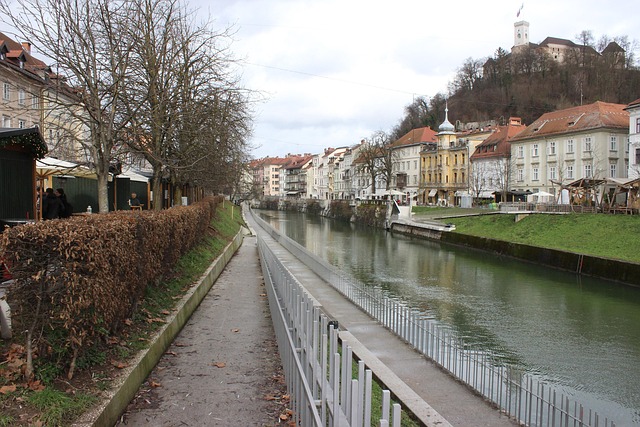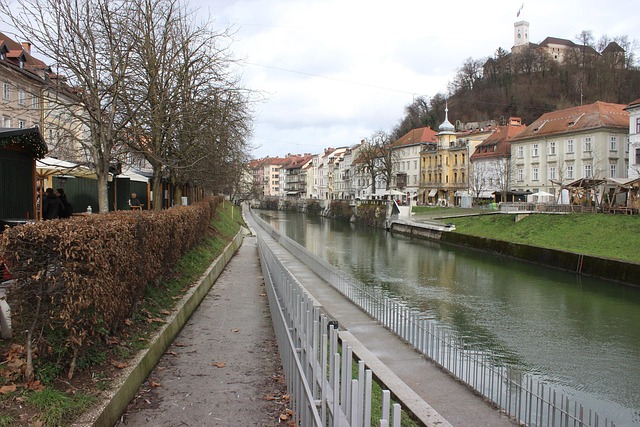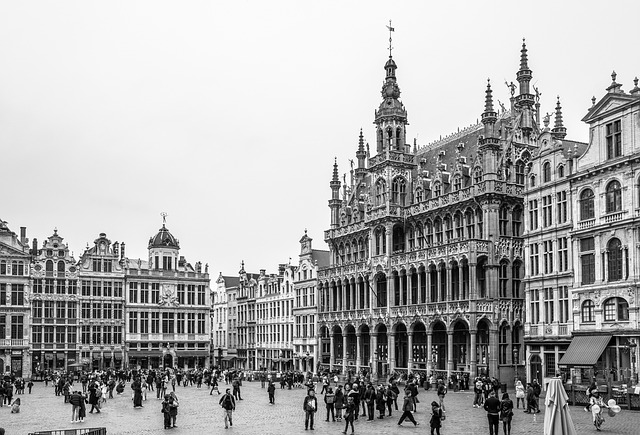Jinnah Avenue in Karachi, named after Pakistan's founder, reflects the city's evolution from colonial trading post to modern center. This historic thoroughfare, facing traffic congestion and poor road conditions, has seen recent upgrades focusing on infrastructure, safety, and accessibility. Efforts align with a strategy to transform Jinnah Avenue into a model corridor, integrating smart city technologies and sustainable practices. Future development hinges on community engagement, aiming for innovative solutions to enhance road safety, traffic flow, and urban space, setting a benchmark not just in Karachi but across Pakistan.
“Jinnah Avenue, a historical thoroughfare in Karachi, has witnessed the city’s evolution. This article explores the current state of its road infrastructure, delving into the challenges faced by drivers navigating its bustling streets. From historical background to future prospects, we analyze efforts to enhance road conditions and community engagement. Understanding Karachi’s iconic avenue offers insights into urban development and the continuous pursuit of a smoother, safer travel experience.”
- Historical Background of Jinnah Avenue in Karachi
- Current State of Road Infrastructure
- Challenges and Issues Faced by Drivers
- Efforts to Improve Road Conditions
- Future Prospects and Community Engagement
Historical Background of Jinnah Avenue in Karachi

Jinnah Avenue, a significant thoroughfare in Karachi, boasts a rich historical background intertwined with the city’s evolution. Originally known as D.G. Road (after the British colonial administrator, Sir Donald Macdonald), it was later renamed after Muhammad Ali Jinnah, the founder of Pakistan, in 1965. This renaming reflected the avenue’s pivotal role in the country’s political landscape and Karachi’s status as a bustling metropolis. Over time, Jinnah Avenue has witnessed the city’s transformation from a colonial trading post to a vibrant, modern urban center.
The avenue is characterized by its extensive length, stretching for several kilometers through the heart of Karachi. Historically, it served as a crucial link between the port areas and the city’s administrative and commercial hubs. The diverse architecture along Jinnah Avenue also tells a story, with buildings ranging from colonial-era structures to modern skyscrapers, symbolizing Karachi’s dynamic character and its ability to embrace change while preserving its historical identity.
Current State of Road Infrastructure

The road infrastructure in Karachi, particularly on Jinnah Avenue, has seen significant developments over the years. However, despite efforts to enhance connectivity and ease traffic congestion, the current state of these avenues still presents certain challenges for both residents and visitors alike. The bustling streets of this metropolis often witness heavy traffic jams, especially during peak hours, which can be attributed to a combination of factors such as increasing vehicle ownership rates and inadequate road management practices.
In terms of maintenance, many sections of Jinnah Avenue are in fair condition, with regular repairs and upkeeping ensuring a smoother travel experience for drivers. Yet, certain stretches remain neglected, featuring potholes and rough surfaces that can cause damage to vehicles and pose safety risks to road users. The city’s ever-growing population and rapid urbanization have exerted pressure on the existing road network, making it crucial for authorities in Karachi to prioritize thoroughfare maintenance and implement innovative solutions to cater to the increasing demand for efficient transportation systems.
Challenges and Issues Faced by Drivers

Jinnah Avenue, a bustling thoroughfare in Karachi, presents unique challenges for drivers navigating its dense traffic and often poor road conditions. The street, while vital to the city’s infrastructure, struggles with several issues that impact safe and efficient commuting. One of the primary concerns is the inconsistent quality of the road surface, characterized by potholes, uneven patches, and rough terrain, especially during monsoon seasons. These obstacles force drivers to navigate with caution, often leading to slower speeds and increased fuel consumption.
Moreover, the high density of vehicles, both private and commercial, exacerbates the problem. The constant flow of traffic contributes to severe congestion, particularly at busy intersections and during peak hours. Drivers frequently encounter difficult maneuvers, such as tight turning angles and limited lane space, requiring heightened awareness and skill. In light of these challenges, it’s imperative for authorities to address the road maintenance and urban planning aspects to ensure a smoother experience for Jinnah Avenue’s frequent users.
Efforts to Improve Road Conditions

In recent years, there have been concerted efforts to improve road conditions on Jinnah Avenue in Karachi. The local government and various civic organizations have embarked on ambitious projects aimed at enhancing the avenue’s infrastructure, safety, and accessibility. These initiatives include paving and repaving key sections, installing modern lighting systems, and adding dedicated bike lanes to cater to the growing demand for eco-friendly transportation options.
The improvements are part of a broader strategy to transform Jinnah Avenue into a model corridor that prioritizes both aesthetic appeal and functionality. By incorporating smart city technologies and sustainable practices, Karachi aims to set a benchmark for urban development not just within the city limits but across Pakistan. Regular maintenance and upkeep are also being ensured to prevent future deterioration, making the avenue safer and more pleasant for residents and visitors alike.
Future Prospects and Community Engagement

The future prospects of Jinnah Avenue, a bustling thoroughfare in Karachi, rely heavily on community engagement and collaborative efforts. With the city’s ever-growing population and urban expansion, it is crucial to involve local residents, businesses, and stakeholders in shaping the avenue’s development. By fostering open dialogue and encouraging active participation, the community can contribute to innovative solutions that enhance road safety, improve traffic flow, and create a more vibrant urban environment.
Engaging the community allows for a better understanding of unique challenges and opportunities along Jinnah Avenue. This collaborative approach can lead to sustainable infrastructure developments, such as adding bike lanes, improving pedestrian walkways, or implementing smart traffic management systems. By embracing these prospects, Karachi can set an example for other urban centers, showcasing how inclusive planning can result in a more livable, resilient, and prosperous city for all its residents.
Jinnah Avenue, a historical thoroughfare in Karachi, has witnessed significant changes over time. While its current road conditions face challenges, ongoing efforts to improve infrastructure promise a brighter future. By addressing issues through strategic initiatives and community engagement, the avenue can enhance mobility and connect the vibrant city of Karachi more effectively. These developments will not only benefit local drivers but also contribute to the overall growth and livability of the metropolis.

Leave a Reply